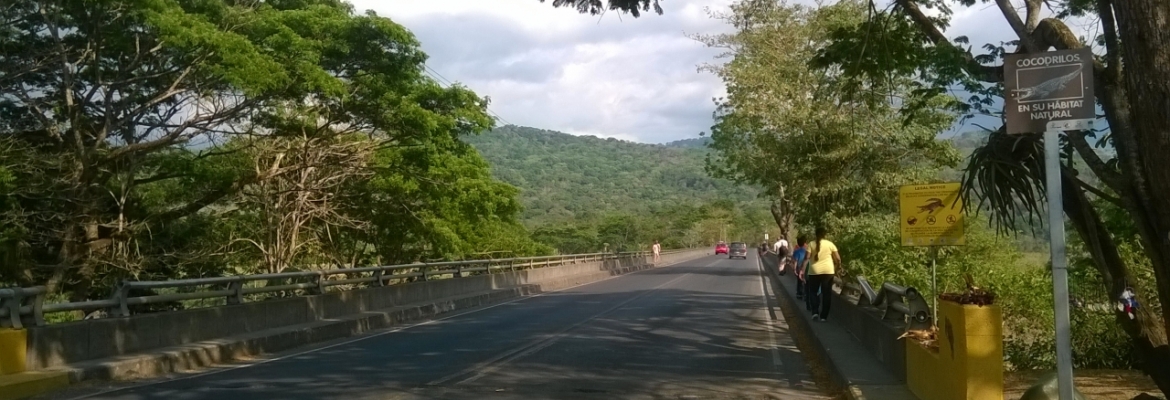Tarcoles Bridge Construction & Rehabilitation: What You Need to Know

The Tarcoles Bridge (often called the Crocodile Bridge) spans the Río Tárcoles on Route 34 (Costanera Sur) and is a vital link for traffic traveling between San José and the Pacific coastal destinations (Jacó, Manuel Antonio, Uvita, Osa, etc.). This bridge is not only functional but also a well-known tourist stop — people pause to peer over the bridge to see crocodiles basking below.
Recognizing structural and safety needs, Costa Rica’s government has launched a significant rehabilitation project on the bridge. In this article, we cover the scope, timeline, impacts, environmental considerations, and travel advice.
Why the Rehabilitation Is Needed
Structural & Safety Concerns | The bridge’s foundational elements—bastions, piers, and supporting structures—are being reinforced because they are critical to the bridge’s stability, especially in the face of seismic (earthquake) risk. There will be deep excavations (about 14 meters) at certain support zones to strengthen the substructure.The project is seen as essential to guarantee that the bridge can continue to safely carry traffic over the long term.
Environmental & Ecosystem Concerns
Because the bridge is over the Tárcoles River, home to many crocodiles and local wildlife, the project must balance engineering work with ecological sensitivities. Plans to relocate crocodiles during the construction were considered, but experts strongly advised against it, arguing that crocodiles have strong habitat loyalty and are likely to return, making relocation ineffective and risky. The project includes protocols to limit disturbance, especially in zones close to the river and wildlife habitats.
Project Timeline & Phases
Duration & Schedule. The rehabilitation is expected to last approximately 310 days (around one year), with completion projected for mid-2026. Work began in mid/late 2025. Temporary closures, alternating lanes, and night closures are part of the traffic plan.
According to official and media reports, the rehabilitation will proceed through multiple stages:
- Bastion / abutment repairs and adjustments (foundation zones at the bridge ends)
- Pier reinforcement / pile strengthening for the support columns in the river
- Soil improvement and erosion control around the foundations to guard against scouring and ground instability
- Superstructure interventions: deck, beams, seismic joints, walkway improvements, and complementary works
Additionally, the funding for the project is being provided by a loan from the Central American Bank for Economic Integration (CABEI), showing international support for Costa Rica’s infrastructure upgrades.
Traffic & Travel Impacts | Lane Closures & Delays
- During rehabilitation, alternating single-lane traffic will be used during daylight hours.
- Selected overnight closures are planned, especially in the second half of 2025.
- Pedestrian access is restricted in certain periods; lingering or stopping on the bridge is prohibited for safety.
The rehabilitation may add significant travel time along Route 34, especially during peak periods or holidays.
Alternative Strategies for Travelers
Some travelers are opting to fly to destinations like Quepos (to bypass the road delays) as an alternative during peak traffic periods.
Allow extra buffer time when planning road travel via the Costanera Sur (Route 34) during the construction period.
Private transportation services and shuttles are adjusting schedules and monitoring real-time traffic to minimize disruption.
Environmental & Stakeholder Considerations
Crocodile Protection - Experts maintain that crocodile relocation is ill-advised. Instead, the project is implementing safety plans for workers and encouraging natural avoidance by wildlife.Reports indicate that the number of crocodiles seen near the bridge has diminished during construction, likely due to disturbance rather than outright removal.
Impact on Local Businesses & Tourism
Because the bridge is also a tourist draw (for crocodile viewing), limiting pedestrian access and prohibiting lingering could reduce stop-by traffic. There are legal and ethical questions about whether affected businesses or citizens may have ground to request compensation for economic losses resulting from the closures. Government agencies are expected to coordinate closely with tourism operators to mitigate negative effects.
What Travelers & Visitors Should Know
- Plan for delays. Travel times along Route 34 will likely increase during the rehabilitation period.
- Avoid stopping on the bridge. For safety and to comply with regulations, do not linger on the bridge during construction.
- Pedestrian access is restricted. Walking access may be limited depending on the construction schedule.
- Skip crocodile viewing from the bridge. During heavy machinery operations, pedestrian observation is disallowed.
- Ground trips: Be patience and enjoy the surroundings.
- Stay updated. Construction progress, lane closures, and scheduling will evolve; check official MOPT/CONAVI announcements or trusted local transport services.
The rehabilitation of the Tarcoles Bridge is a critical infrastructure upgrade, balancing the demands of structural safety, seismic resilience, and environmental stewardship. While travelers and local communities may experience disruptions over the approximately one-year period, the end result should be a safer, more durable bridge that continues serving both transit and tourism needs


